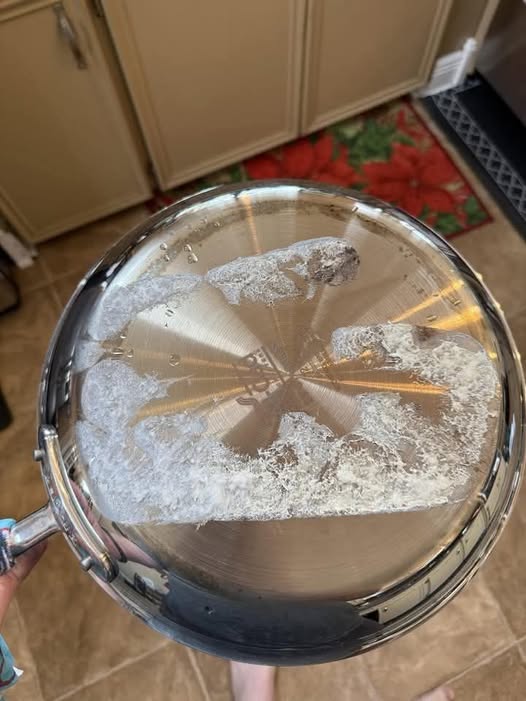
Put My Brand New $120 Pan on a Hot Pad That Was Supposedly Made for Hot Pans. I Hadn’t Even Cooked on It Yet, and Now the Fabric is Fused to the Pan and Won’t Come Off.
There are few things more disheartening than ruining something brand new before you’ve even had the chance to use it properly. That’s exactly what happened to me with my brand-new $120 pan. I had taken it out of the box, admired its perfect, gleaming surface, and carefully set it down—on what I thought was a heat-safe hot pad. I hadn’t even cooked a single meal with it yet. No eggs, no sauces, no sizzling steaks. It was pristine. And now? The fabric of the hot pad is melted and fused to the bottom of the pan like some cruel, irreversible mistake.
When I bought the pan, it felt like an investment. I spent time researching the best brands, looking for something that would last me years—maybe even decades. This was the kind of pan you hand down, the kind that promises perfect sears and even cooking. It had all the premium labels: “Professional Grade,” “Triple-Ply Construction,” “Lifetime Warranty.” I couldn’t wait to break it in.
Knowing I wanted to take care of it properly, I even bought a set of kitchen accessories, including new hot pads, to protect it. I didn’t skimp on quality. The packaging for the hot pads claimed they were designed for high heat, promising to withstand temperatures up to 500 degrees Fahrenheit. It should have been safe—more than safe.
But somehow, that assurance turned out to be a lie. Within minutes of resting the pan, still warm from washing under hot water, onto the pad, I noticed something strange. There was an odd smell, almost like burnt plastic. When I lifted the pan, horror set in. The once-flawless surface was now smeared with melted fabric. Bits of the hot pad clung stubbornly to the bottom, hardened into a grotesque patchwork. It didn’t just wipe off. Scraping at it gently with a wooden spatula only spread the mess around. Trying to peel it off with my fingers resulted in sharp little strings of hardened synthetic fibers.
I felt a wave of frustration, then sadness. I hadn’t even cooked my first meal. I hadn’t seen how well it held a sauté or tested how evenly it distributed heat. And now, the bottom was damaged before it even touched a stovetop.
My first instinct was to blame myself—maybe I hadn’t read the packaging closely enough, maybe the pad wasn’t really meant for hot pans, just hot plates or mugs. But after rereading the label several times, I confirmed it: “Safe for hot cookware.” It wasn’t me. It was a product failure.
I contacted the manufacturer of the hot pad first, sending photos of the damage and explaining what happened. I’m still waiting to hear back. As for the pan company, I’m debating whether I should reach out too, though part of me feels guilty for what happened even though it wasn’t my fault. I just wanted to do everything right, to protect my new pan, not ruin it before I even got the chance to enjoy it.
Now I’m stuck trying to figure out if I can salvage it. Some people online recommend heating the pan lightly to soften the melted fabric and then using a plastic scraper. Others suggest solvents like Goo Gone, though I worry about damaging the finish or voiding the warranty. Every suggestion feels like a gamble with something that was supposed to be perfect.
In the end, I’m left with a bitter reminder: even when you think you’re being careful, sometimes cheap materials or false advertising can ruin the best intentions. I just hope I can save my pan—or at least turn this into a lesson for next time: trust, but verify, especially when it comes to anything that touches your most treasured kitchen tools.